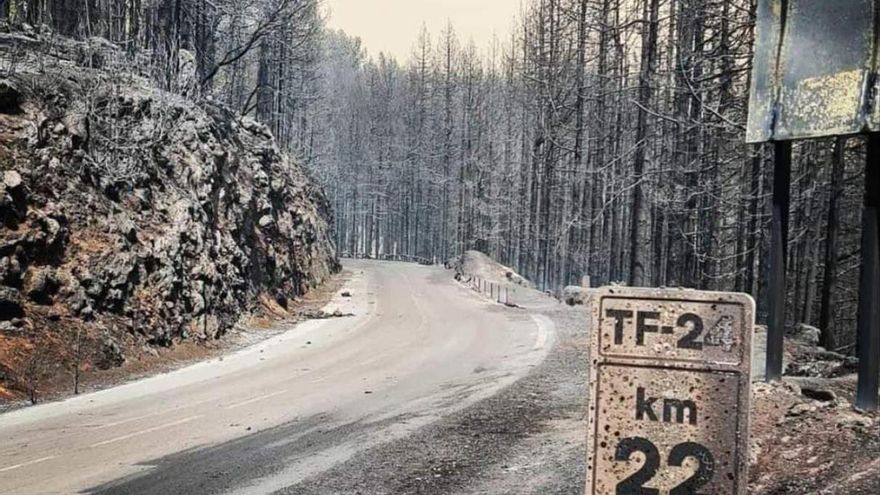
The fire declared this Tuesday night in the highlands of Arico and that has already jumped to the north slope of the island and burned more than 2,600 hectares is causing serious damage to some of the most important and best preserved forests in the Archipelago.
Is about the pine forests of the Forest Crown of Tenerife, the largest protected area of Canary Islands. It’s a natural protection belt Teide National Park that spans 46,613 hectares. This forest area, dominated by pine forests and mountain vegetation, covers 17 of the 31 municipalities of Tenerife: La Orotava, Adeje, Los Realejos, Vilaflor, El Tanque, Santiago del Teide, Candelaria, Icod de los Vinos, La Guancha, San Juan de Rambla, Güímar, Arico, Arafo, Guide from Isora, Granadilla, Fasnia and Garachico.
Some of the most important disseminators of the Island they already classify the fire of Corona Forestal as “a great natural catastrophe”. This is the case, for example, of jamie coellomaster’s degree in Environmental Policy and Management, naturalist, environmental and scientific disseminator and director of the Telesforo Bravo-Juan Coello Canarian Foundation. “The flames are destroying places of great biological interest, some of the best preserved forests on the Islands”he assures in statements to EL DÍA.
Coello lists the reasons why he considers the Corona Forestal a decisive space for the nature of Tenerife. “It forms a protective ring of the Teide National Park, it has a multitude of ecosystems connected to each other of great wealth, it is vital for the collection of water and is the habitat of a multitude of species, some endemic to Tenerife or the Canary Islands, such as the Canarian pine itself. , the blue chaffinch or the woodpeckers”.
The Forest Crown protects Mount Teide, is home to many species exclusive to the Islands and is vital for water collection
Jaime Coello recalls that there are many other species of great value in the Forest Crownsuch as invertebrates, the species of the so-called microbiota (communities of microorganisms) or bats and lizards, seriously threatened by the great forest fire that affects Tenerife.
juanjo ramosspecialist in environmental communication and biodiversity conservation, as well as a nature photographer and bird expert, goes further and points out that “some of the most important forests in the Canary Islands” are being burned.. “We are probably the generations that have received the best pine forests in history thanks to the conservation and repopulation policies that have given such good results,” he underlines.
Ramos is especially concerned about bird species, who “find in the Forest Crown a wide and ideal space for development.” cite specifically the blue fincha bird that only exists in Tenerifejust like him Great Spotted Woodpeckerthe robinsthe tits and the mosquito nets. “They must be suffering a lot because these species have their ideal habitat in some of the forests that are burning.”
“The fire is affecting some of the ornithological jewels of the Islands”emphasizes the naturalist, who has followed since Moroccowhere he is developing a project, the evolution of the flames with “enormous concern”.
The blue finches and woodpeckers that populate the Corona Forestal are right now in the breeding season
Jaime Coello remembers another important fact about this fauna of the Forest Crown: “The blue finches and the woodpeckers are now precisely in the breeding season. The llamas must be causing them enormous damage, we still don’t know if it’s irreparable.”
He blue chaffinch, an emblem of Tenerife’s fauna, lives exclusively in the pine forests of Tenerife. In general, they live at an altitude of 1,000 m to 2,000 meters, although they can sometimes be seen at lower levels. Within the pine forest, they will choose the area with the greatest number of mature pines.
















